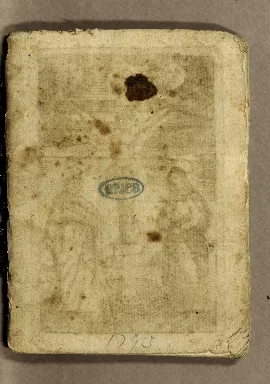During the migration of our legacy catalogs and past exhibitions into Americana, there are occasionally items that cannot be immediately included in our new environment. This may happen for two reasons: the item in question is not yet cataloged, or it was lent by another institution.
Any items that are not integrated into Americana are included in this section and added to our processing queue.
Solar Monstrance, late 18th/early 19th century
Used to display the Eucharistic Host, monstrances were made of costly, precious metals and ornamented with sparkling gems. Although the privilege of holding vessels containing the Host was reserved for priests, some early modern nuns had visions in which they carried monstrances and thereby assumed priestly authority. For example, Gerónima de la Asunción (the subject of the Exemplo de todas las virtudes and the Perfecta religiosa in the present exhibition) underwent a mystical rapture in which a sculpture of the Christ child became a monstrance that she bore in procession. In that miracle, the very mystery of transubstantiation was enacted: the sculpture that represented Christ’s flesh was transformed into the Eucharistic bread inside the monstrance. From the perspective of material culture, the miracle of holding the monstrance also granted Gerónima access to one of the most splendid objects in the church. This monstrance is part of the UWM Art Collection at the University of Wisconsin-Milwaukee.
María de San José, “Oaxaca Manuscript,” late 17th-early 18th century
In the excerpt from her spiritual autobiography shown here, the Mexican nun María de San José (1656-1719) apologizes for the brown blotches on the manuscript, which, she confesses, is stained with chocolate. Writing to the Bishop of Oaxaca, she explains that a Franciscan official was reading the text when “a boy came to give him a cup of chocolate and … spilled it on the notebook.”
Although they purportedly embraced asceticism, Mexican nuns – like the male priest who stained María’s manuscript – consumed chocolate avidly. For centuries before Europeans arrived in the Americas, indigenous Mexican nobles had drunk chocolate beverages, which criollos (Mexicans of European descent) adapted to the colonial diet. In Puebla, where María took vows, convents had rooms, called chocolateros, designated for consuming chocolate after prayers. On the day María entered the convent, the nuns welcomed her with hot chocolate and other treats. Despite the abstemiousness that María had long practiced, she realized that to refuse the indulgent offering would seem inappropriate to other members of the religious community.




















